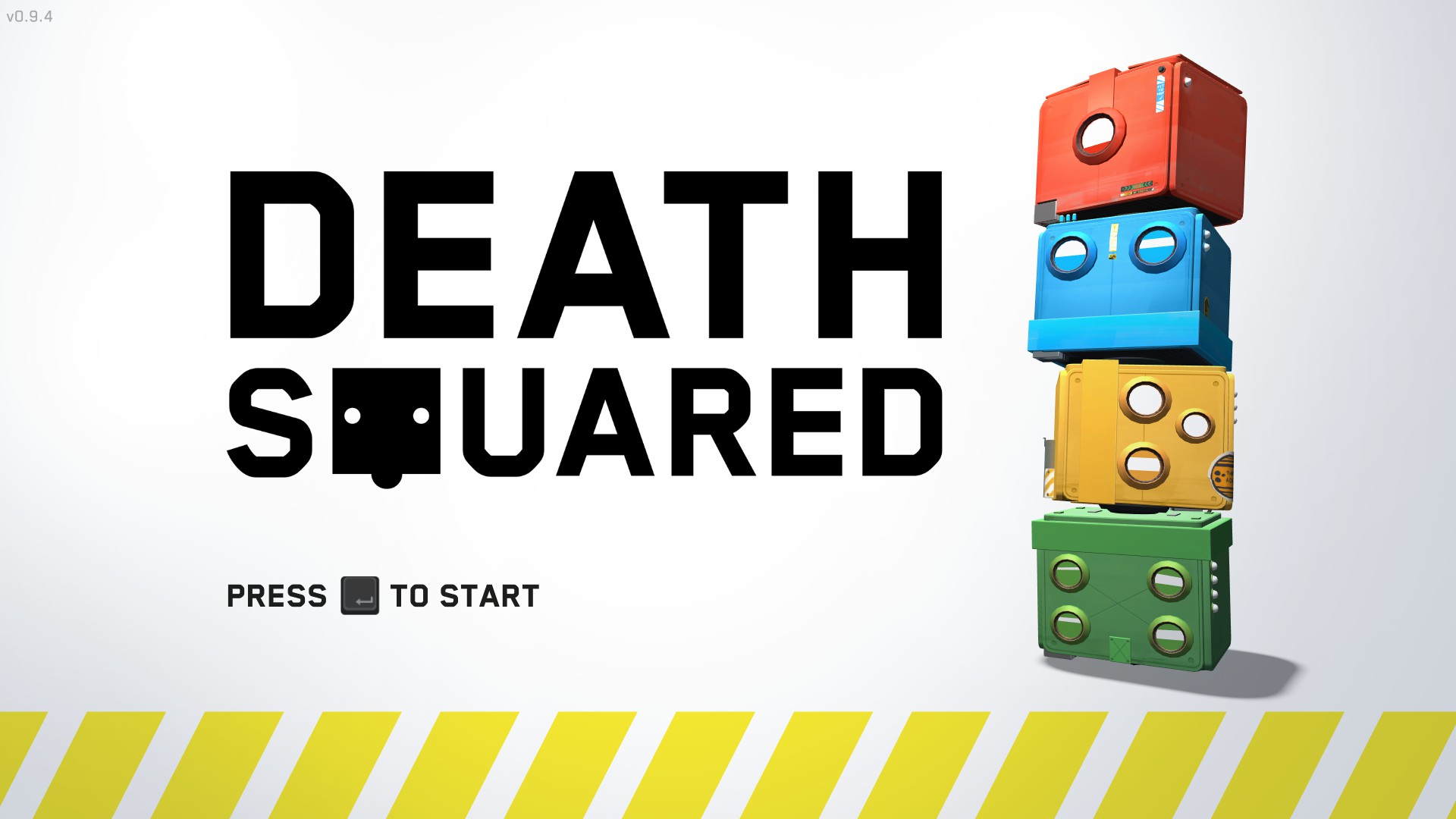Platforms:
Xbox One, PS4, PC
Released:
March 15, 2017
Publisher:
SMG Studio
Developer:
SMG Studio
Death Squared is an adorable cooperative puzzle game that is available for PC, PS4 and Xbox One. Made by Sydney based development team, SMG Studio, I first got to try Death Squared late last year at PAX Australia. Since then things have only gotten bigger and better for the game which I was able to discover after I sat down with the title, experienced its narrated story, attempted to comprehend its puzzles, and got that rush of elation when I was finally able to complete it. But what is the game all about? And is it worth picking up? Let’s explore in further detail, shall we?
“While there was most certainly challenge, I didn’t find anything so profoundly difficult that it made me want to give up or not enjoy the experience on offer, and that’s a commendable balance to find.”
The Basics
Death Squared is a game that has personality, complexity, and great variety of content. The game has the player take control of two AI cubes, or, if played cooperatively, 1 cube each. The goal is simple – move the cubes onto their respective squares. The execution – far less simple. Over the course of 80 missions the game introduced mechanic after mechanic that created additional obstacles for me to overcome. While there was most certainly challenge, I didn’t find anything so profoundly difficult that it made me want to give up or not enjoy the experience on offer, and that’s a commendable balance to find.
Additional to the 80 main missions or ‘story missions’, the game also offered 40 ‘party levels’ that had the player control 4 cubes rather than 2, and 20 ‘experiments’ that moved the puzzles in crazy new directions. This can probably go without saying but the party levels created an entirely new dimension of difficulty, not necessarily due to puzzle-solving aspects but instead due to the coordination it required to control 4 separate characters. This mode, more than any other, really felt like it was intended to be played cooperatively with 2 or even 4 players (which the game allows you to do). Controlling 1 or 2 characters is manageable, 4 is an entirely different beast.
The art style of Death Squared is very clean and presentable. Using bold colours for both characters and obstacles juxtaposed against a clinical or white environment has become somewhat of a staple for the puzzle game genre, but for good reason. Everything was so clean and readable, it made for a much more elegant and enjoyable experience.
Whilst a lot of the visual and UI designs were fantastic, one aspect that was sorely needed and lacking was an options menu accessible from the pause menu. If I wanted to adjust my resolution, play in a windowed format, alter my graphics settings or adjust the game’s volume then I would have to quit to menu, go into settings, adjust, and then jump back into the puzzles. Oh and I’m sorry to any hearing impaired players because there doesn’t seem to be any way to enable subtitles, a feature that would have been convenient for me but practically mandatory for others.
The Personality
The area where Death Squared really differentiates itself from other indie puzzle games is with the personality it is able to inject. Throughout the entirety of the game’s 80 story missions you will get commentary from David and IRIS, a human and an AI in charge of overseeing the operation and testing the subjects. The narrative of the game is straightforward but the dialogue is surprisingly well written and acted, especially for a smaller studio. Adding humour into the mix always helps, and whilst the game may never have had me laughing out loud in hysterics, it did quite often have me smiling like a goof listening to the two characters interact and commentate.
A lot of the dialogue took place in between missions and gave snippets of narrative progression or just general office chatter. Although there were also lines of dialogue that triggered throughout the course of a puzzle that were contextually attached to the actions I performed (dying, succeeding, not moving). There was actually a surprising amount of variety in these lines although a select few played for me a bit too often.

The game does do a really great job of imbuing personality into what could have been a much more dull or robotic experience. In one of the very first levels of the game I came across an odd looking pad that when stepped on changed the decal on the controlled cube. I realised that there were quite a substantial range of quirky options on offer when David’s voice cut in to say “10 omni-credits says red chooses moustache.” Naturally I chose the moustache.
The Puzzles
I guess we can’t get away with not discussing the puzzles in a puzzle game for too much longer. Death Squared may have a simple premise but the game ads complexity in the form of new mechanics and obstacles that lie in your path. Impassable blocks, moving blocks, buttons, laser triggers, death lasers, push-able blocks, teleportation and a whole lot more was slowly introduced into the game, and all of a sudden you realised how this simple premise could get unbelievably difficult as the game goes on.
I played the first 32 puzzles of the story cooperatively and then the following 48 solo. Both methods of play came with their own challenges but neither felt incomplete or a lesser experience. As for the difficulty, it peaked and troughed a bit throughout the game, but for the most part it steadily increased in difficulty as the game went on. Most certainly by the final 8 or so levels I could feel the game really begin to challenge me.
Here’s where things get interesting with Death Squared. The way this game is designed and the way the puzzles are structured means that the player is relying more heavily on coordination, communication (if coop), memory, and trial-and-error, and relying less on pure wit. Whilst it is good that the game tests you in multiple ways, there is something far less satisfying about the trial-and-error type of gameplay when compared to visualising and enacting a solution from the get-go. For example, the game will have buttons that when activated trigger an action so complicated it can’t possibly be memorised by the player, or triggers an action that will straight up kill you.
The game wants you to try and fail and therefore learn, although the ultimate result of that kind of gameplay means that each puzzle is solved bit by bit and not all at once. You figure out what you can do because every other action will either kill you or not get you anywhere, you then you figure out what you can do next. Whilst it was satisfying and challenging, it did remove that kind of eureka moment that you get when you realise the solution to a puzzle that has been haunting you – and those moments are the best part of a puzzle game.
Positive:
- So much personality
- Satisfyingly challenging
- Compatible co-op or solo
- Good variety and quantity of content
Negative:
- Lacking options menu
- No 'eureka' moment
Death Squared seems like the perfect game to pick up with a friend or family member to test your collective puzzle-solving abilities. It’s cute and challenging but doesn’t become too overwhelming with its difficulty. Whilst not without its flaws, Death Squared is most certainly a game worth experiencing. The game is surprisingly well written and voice acted and has a personality that helps carry you from one puzzle to the next.













